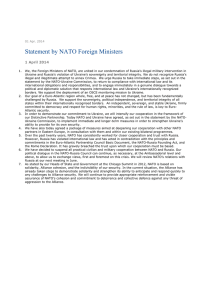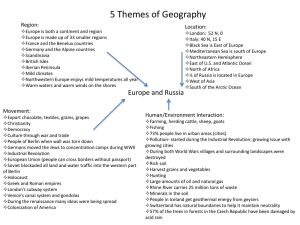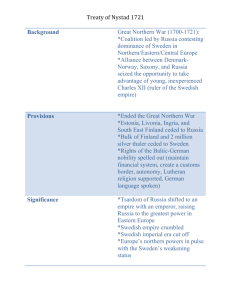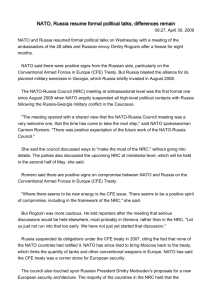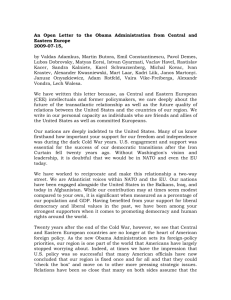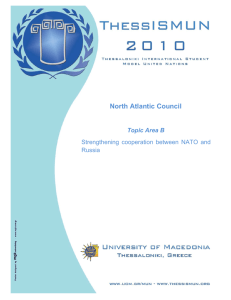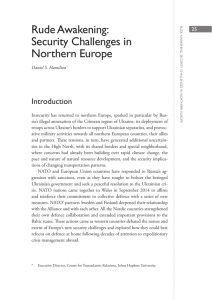russia
advertisement
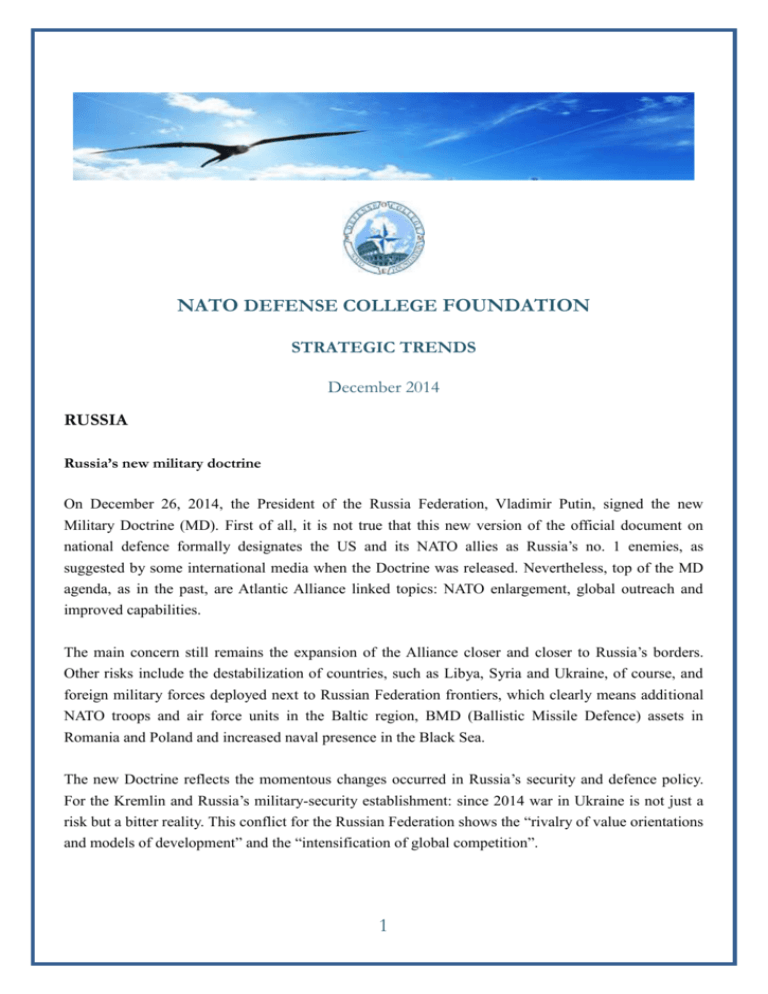
NATO DEFENSE COLLEGE FOUNDATION STRATEGIC TRENDS December 2014 RUSSIA Russia’s new military doctrine On December 26, 2014, the President of the Russia Federation, Vladimir Putin, signed the new Military Doctrine (MD). First of all, it is not true that this new version of the official document on national defence formally designates the US and its NATO allies as Russia’s no. 1 enemies, as suggested by some international media when the Doctrine was released. Nevertheless, top of the MD agenda, as in the past, are Atlantic Alliance linked topics: NATO enlargement, global outreach and improved capabilities. The main concern still remains the expansion of the Alliance closer and closer to Russia’s borders. Other risks include the destabilization of countries, such as Libya, Syria and Ukraine, of course, and foreign military forces deployed next to Russian Federation frontiers, which clearly means additional NATO troops and air force units in the Baltic region, BMD (Ballistic Missile Defence) assets in Romania and Poland and increased naval presence in the Black Sea. The new Doctrine reflects the momentous changes occurred in Russia’s security and defence policy. For the Kremlin and Russia’s military-security establishment: since 2014 war in Ukraine is not just a risk but a bitter reality. This conflict for the Russian Federation shows the “rivalry of value orientations and models of development” and the “intensification of global competition”. 1 In fact the Kremlin views Kiev’s Euro-Maidan events as a NATO slap on Russia’s face. Moscow believes that in Ukraine the Atlantic Alliance crossed the red line drawn down long time ago by Russia, and now NATO directly threatens its national interest and security. Another risk included in the MD is the overthrow of legitimate governments, an open reference to Yanukovich, but also to Russia domestic issues - the recent street protests against Putin, orchestrated by the West, according to the Kremlin. The MD states that the international balance of power is shifting in favour of emerging countries. In this new global framework, information warfare (from PSYOPS on social networks to cyber attacks) and outside interference in Russia home affairs are risks of growing salience. Other main threats for Russia are indentified in the following: US strategic ballistic missile defence, American Global Strike concept and strategic non-nuclear systems. To NATO, EU and USA, the new Russia’s MD offers a “dialogue of equals” on European and AsiaPacific security, arms control, WMD proliferation issues. Tough the West is considered as a powerful rival and the source of major threats for Russia, NATO, EU and US are not officially labelled as enemies in the new MD. On the other hand, despite the bitter personal relation between Lukashenko and Putin, Belarus is considered the ally no. 1: Minsk’s armed forces practically merged with Russian ones. Collective Security Treaty Organization members are the closest circle of friends: they all share similar security interests and main concerns about external threat, i.e. on Afghanistan. Despite the economic crisis, Moscow considers as national military priorities: upgrading the readiness of defence capabilities and military forces, while at the same time preventing a military superiority in BMD and conventional forces by Washington. Regarding strategic nuclear issues, the new MD does not adopt the principle of a preventive nuclear strike. However, it states that for the future Russia must act to guarantee the deterrence power of its strategic nuclear weapons. The previous version of the Russia’s MD had been published in February 2010. 2



